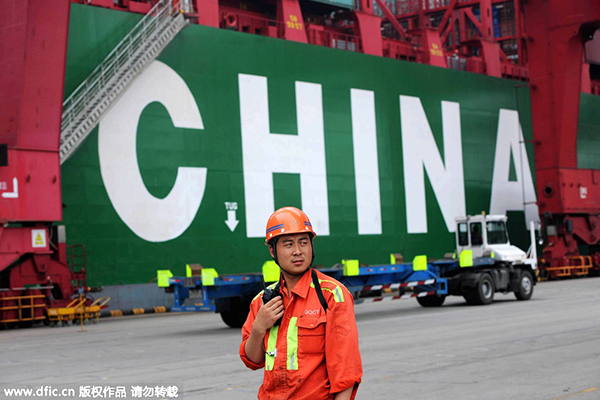World Bank projects China's economy to grow 6.7% this year
(Xinhua) Updated: 2016-04-13 07:44
 |
|
A stevedore works at Qingdao port in Shandong province, July 1, 2015. [Photo/IC] |
The projection is on par with its last estimate in January. The bank has kept its projection for 2017 at 6.5 percent.
"China's orderly transition to slower but more sustainable growth has continued despite some volatility in financial markets," according to the East Asia and Pacific Economic Update, which is published by the bank twice a year.
The growth deceleration was especially pronounced in the real estate and manufacturing sectors. Excess capacity has been a drag on a wide range of industries, while service sector remains robust, the report noted.
Despite slower GDP growth, the urban job creation exceeded the annual target in 2015 and the household disposable income grew faster than GDP growth.
"The overall capacity of China's economy to create jobs is extremely high," said Sudhir Shetty, Chief Economist of the World Bank's East Asia and Pacific Region at a video conference.
The bank warned that credit growth continues to outpace GDP growth and leverage is still building. Monetary and fiscal policy stances are expected to remain accommodative to limit risks of a rapid growth slowdown that could trigger disorderly adjustments in accumulated imbalances.
The bank also expects growth in East Asia to ease from 6.5 percent in 2015 to 6.3 percent in 2016 and 6.2 percent from 2017 to 2018.
"Developing East Asia and Pacific continues to contribute strongly to global growth. The region accounted for almost two-fifths of global growth in 2015, more than twice the combined contribution of all other developing regions," said Victoria Kwakwa, incoming World Bank East Asia and Pacific Regional Vice President.
- Air Liquide signs another long-term contract with subsidiary of Chinese giant Sinopec
- Chinese firm to build $80m ceramic tiles plant in Ghana
- US economy to benefit from record Chinese investment: report
- Nearly 45% of youth entrepreneurship programs make profits: Survey
- Broadband connections to boost rural online commerce
- Shenyang company offers world's first smart machine tool
- Fish farms next on menu for New Hope
- Living aboard to dive, enjoy high-end voyages

















